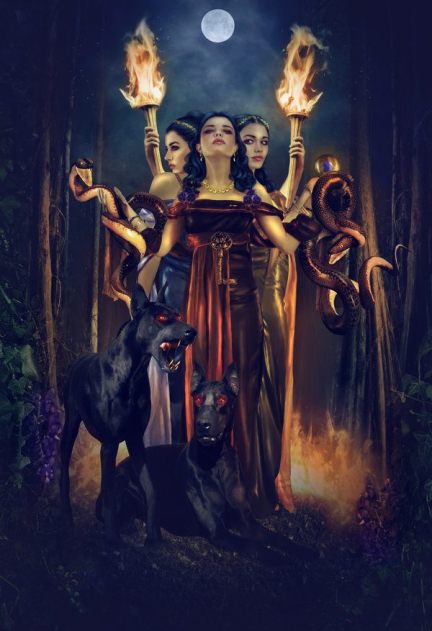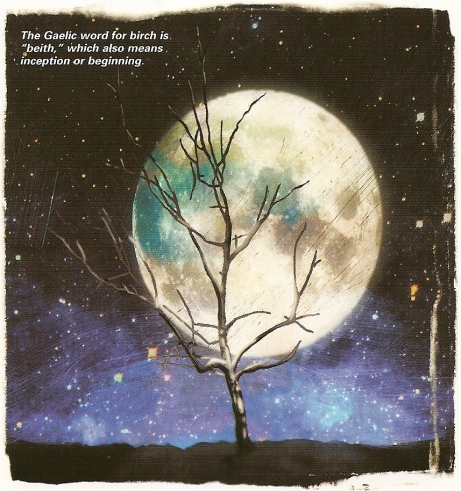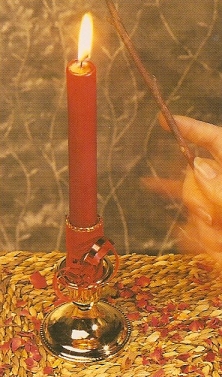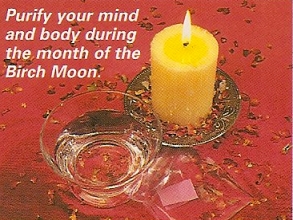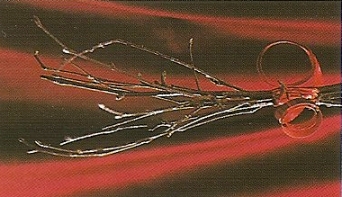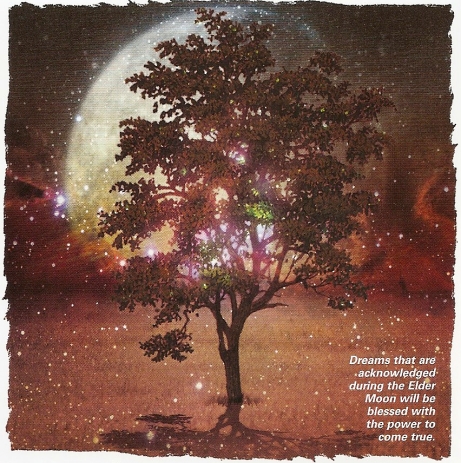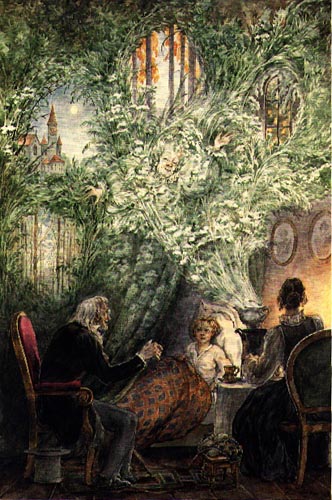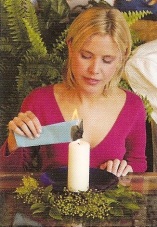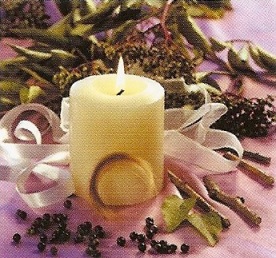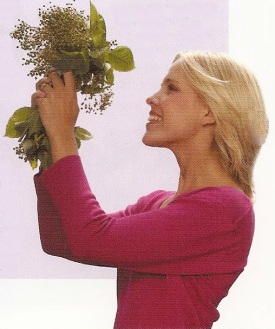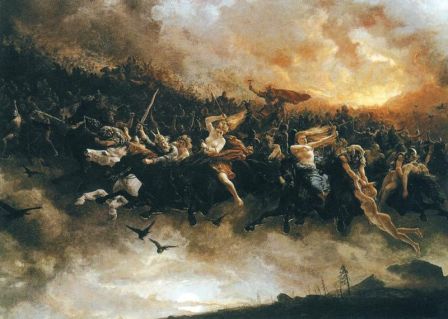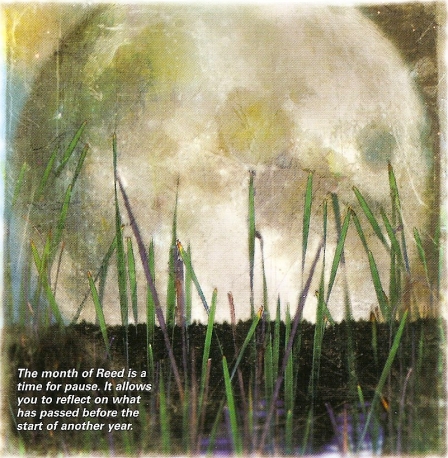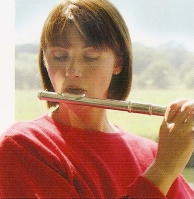“Hecate’s themes are the moon, beginnings and magic. Her symbols are serpents, horses or dogs (Her sacred animals), light (especially a torch), myrrh, silver and moonstone. This Greco-Roman Goddess rules the moon and opportunities. Tonight She opens the path through which the old year departs and the new enters. People customarily worship Hecate at crossroads, where worlds meet, which may be why She became a witch’s Goddess. On this, Hecate’s Day, She bears a torch, lighting the way to the future.
At the eve of a New Year, take a moment and pat yourself on the back for a full of Goddess-centered thinking and action. Note your achievements, and thank Hecate for helping you find the way when your vision seemed clouded. An additional benefit here is that speaking this Goddess’s name today banishes unwanted ghosts, including those figurative ghosts of past negative experiences. Let Hecate take those burdens so your new year will begin without anything holding you back.
To accept this Goddess’s powers in your life throughout your celebrations today, wear white or silver items, and light a white candle in Her honor. For a token that will emphasize Hecate’s magic and lunar energies whenever you need them, bless a moonstone, saying something like:
‘Hecate, fill this silver stone
keep your magic with me where ever I roam.’
Carry this, keeping the Goddess close to your heart and spirit.”
(Patricia Telesco, “365 Goddess: a daily guide to the magic and inspiration of the goddess”.)
“At night, particularly at the dark of the moon, this Goddess walked the roads of ancient Greece, accompanied by sacred dogs and bearing a blazing torch. Occasionally She stopped to gather offerings left by Her devotees where three roads crossed, for this threefold Goddess was best honored where one could look three ways at once. Sometimes, it was even said that Hecate could look three ways because She had three heads: a serpent, a horse, and a dog.
While Hecate walked outdoors, Her worshipers gathered inside to eat Hecate suppers in Her honor, gatherings at which magical knowledge was shared and the secrets of sorcery whispered and dogs, honey and black female lambs sacrificed. The bitch-Goddess, the snake-Goddess, ruled these powers and She bestowed them on those who worshiped Her honorably. When supper was over, the leftovers were placed outdoors as offerings to Hecate and Her hounds. And if the poor of Greece gathered at the doorsteps of wealthier households to snatch the offerings, what matter?
Some scholars say that Hecate was not originally Greek, Her worship having traveled south from Her original Thracian homeland. Others contend that She was a form of the earth mother Demeter, yet another of whose forms was the maiden Persephone. Legends, they claim, of Persephone’s abduction and later residence in Hades give clear prominence to Hecate, who therefore must represent the old wise woman, the crone, the final stage of woman’s growth-the aged Demeter Herself, just as Demeter is the mature Persephone.
In either case, the antiquity of Hecate’s worship was recognized by the Greeks, who called Her a Titan, one of those pre-Olympian divinities whom Zeus and his cohort had ousted. The newcomers also bowed to Her antiquity by granting to Hecate alone a power shared with Zeus, that of granting or withholding from humanity anything She wished. Hecate’s worship continued into classical times, both in the private form of Hecate suppers and in public sacrifices, celebrated by ‘great ones’ or Caberioi, of honey, black female lambs, and dogs, and sometimes black human slaves.
As queen of the night, Hecate was sometimes said to be the moon-Goddess in Her dark form, as Artemis was the waxing moon and Selene the full moon. But She may as readily have been the earth Goddess, for She ruled the spirits of the dead, humans who had been returned to the earth. As queen of death She ruled the magical powers of regeneration; in addition, She could hold back Her spectral hordes from the living if She chose. And so Greek women evoked Hecate for protection from Her hosts whenever they left the house, and they erected Her threefold images at their doors, as if to tell wandering spirits that therein lived friends of their queen, who must not be bothered with night noises and spooky apparitions” (Monaghan, p. 146 – 148).
ASSOCIATIONS:
General: Torch, dark moon, raisin & currant cakes, crossroads, three-headed animals or statues, the number 3, masks, and candles.
Animals: Dogs, horses, sheep (especially black female lambs), owls, bats, snakes, and boars.
Plants: Willows, dark yew, blackthorn, groves of trees, saffron, raisins & currants, and gourds (especially pumpkins).
Perfumes/Scents: Queen of the Night (a light flowery fragrance), cinnamon, myrrh, mugwort, honey, lime, and lemon verbena.
Gems and Metals: Sapphire, silver, gold, moonstone, black tourmalin, black onyx, hematite, smoky quartz, and any stone that is dark or luminous.
Colors: Black, orange, yellow-orange, and red-orange. [1]
Some educational and informational videos
And I just thought this song was kind of catchy 🙂
Sources:
Goddessgift.com, “Goddess Symbols and Sacred Objects of Hecate”.
Monaghan, Patricia. The New Book of Goddesses and Heroines, “Hecate”.
Suggested Links:
Covenofthegoddess.com, “Goddess Hekate“.
D’Este, Sorita & David Rankine. Hekate Liminal Rites.
Ford, Michael W. Book of the Witch Moon: Chaos, Vampiric & Luciferian Sorcery, “Hecate”. (p. 99 – 107). (For those with a taste for a “darker” flavor 😉 )
Goddessgift.com, “Hecate, Greek Goddess of the Crossroads“.
Grimassi, Raven. The Witches’ Craft: The Roots of Witchcraft & Magical Transformation.
Hecatescauldron.org, “Hecate’s Cauldron“.
Hekate Symposium 2013, “Hekate: Bright Goddess of the Mysteries by Sorita d’Este“.
James-Henderson, Yvonne. Orderwhitemoon.org, “Hecate“.
Kirkpatrick, Carrie. Goddess Enchantment, Magic and Spells Vol 2, “Goddess of Transformation Hecate“.
Littleton, C. Scott. Gods, Goddesses and Mythology, “Hecate” (p. 617 – 620).
MacLeod NicMhacha, Sharynne. Queen of the Night: Rediscovering the Celtic Moon Goddess, “The Double Life of Hecate” (p. 59 -63).
Mydailygoddess.blogspot.com, “Hecate – Crossroads“.
Reichard, Joy. Celebrate the Divine Feminine, “13. Hecate” (p. 167 – 182).
Revel, Anita. igoddess.com, “Hecate: intuitive wise woman“.
Tate, Karen. Sacred Places of Goddess: 108 Destinations.
The-goddess-hecate.blogspot.com, “The Goddess Hecate“.
Theoi.com, “Hecate“.
Took, Thalia. Thaliatook.com, “Hekate“.
Wikipedia, “Hecate“.

